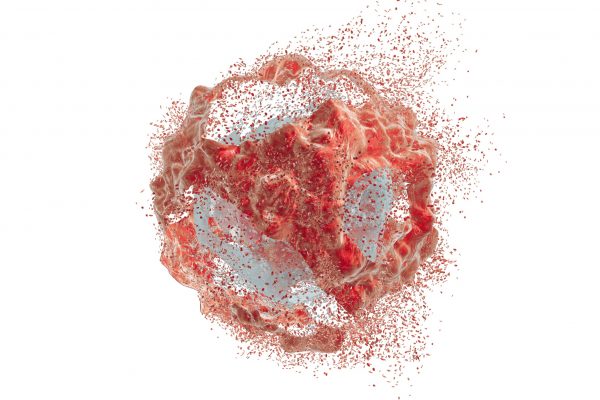
Patients with relapsed and refractory (R/R) acute myeloid leukaemia (AML) have poor outcomes, with primary refractory AML affecting 25-30% of the patients and approximately 60% of the patients relapsing approximately 7 months after initial remission. Off-label use of hypomethylating agents and venetoclax (HMA/VEN) is a common treatment for these patients, with response rates between 20-40%, but outcome predictors remain unclear. Therefore, researchers aimed to develop a prognostic risk score to assess HMA/VEN efficacy and identify predictors for better treatment decision-making.
In total, 240 adult patients (median age 68.6 years) with R/R AML, who had been treated with HMA/VEN and were reported to the venetoclax registry, were included in this retrospective observational multicentre study. Patients receiving non-HMA combinations were excluded from the analysis. A multivariate Cox regression model was developed to predict personalised outcomes, generating a venetoclax-prognostic risk score (VEN-PRS) for overall survival (OS) and event-free survival (EFS). The model was validated using training (n= 174) and validation (n= 189) cohorts, with outcomes via area under the curve (AUC) analysis.
A total of 106 patients (44%) showed an overall response upon receiving a median of two treatment cycles, with 25% achieving complete remission (CR) and 14% achieving CR with incomplete blood count recovery (CRi). After a median follow-up of 31.5 months, 179 deaths were recorded. The median OS (mOS) was 7.9 months, and the EFS was 5.1 months within the entire cohort. In CR/CRi patients, median relapse-free survival (RFS) was 12.9 months. In the multivariate analysis of 174 patients with molecular data, risk factors associated with inferior survival included the presence of extramedullary disease, HMA pretreatment, and mutations in NF1, PTPN11, FLT3, and TP53. Significant prognostic parameters for EFS included the aforementioned clinical and molecular variables except for TP53, which was not prognostic for EFS. In contrast, SF3B1 mutations were an independent risk factor for superior OS (HR[95%CI]: 0.38[0.2–0.8], p= 0.01) and EFS (HR[95%CI]: 0.42[0.2–0.8], p= 0.01).
These risk factors were used to create a hazard ratio (HR)-weighted risk model, categorising patients into three risk groups with distinct survival outcomes: 46 patients (26%) into the favourable risk group, 75 patients (43%) into the intermediate risk group, and 53 patients (31%) into the adverse risk group. This classification resulted in significant differences in OS, with mOS for the favourable, intermediate, and adverse risk groups being 14.2 months, 7.0 months, and 3.1 months, respectively (p< 0.001). The model was successfully validated in 189 first-line HMA/VEN-treated patients with R/R AML and showed higher accuracy in predicting outcomes compared to previously published risk scores and classifications. This clinical-molecular 3-tiered venetoclax prognostic risk score (VEN-PRS) will support treatment decisions in this high-risk population.
This study identified key survival predictors for patients with R/R AML who are treated with HMA/VEN and proposes a clinical-molecular survival model that stratifies patients into three risk groups with distinct OS and EFS outcomes. The VEN-PRS is an effective prognostic tool to guide informed treatment decisions for this difficult-to-treat population.